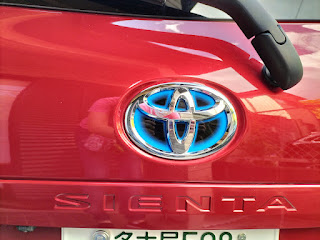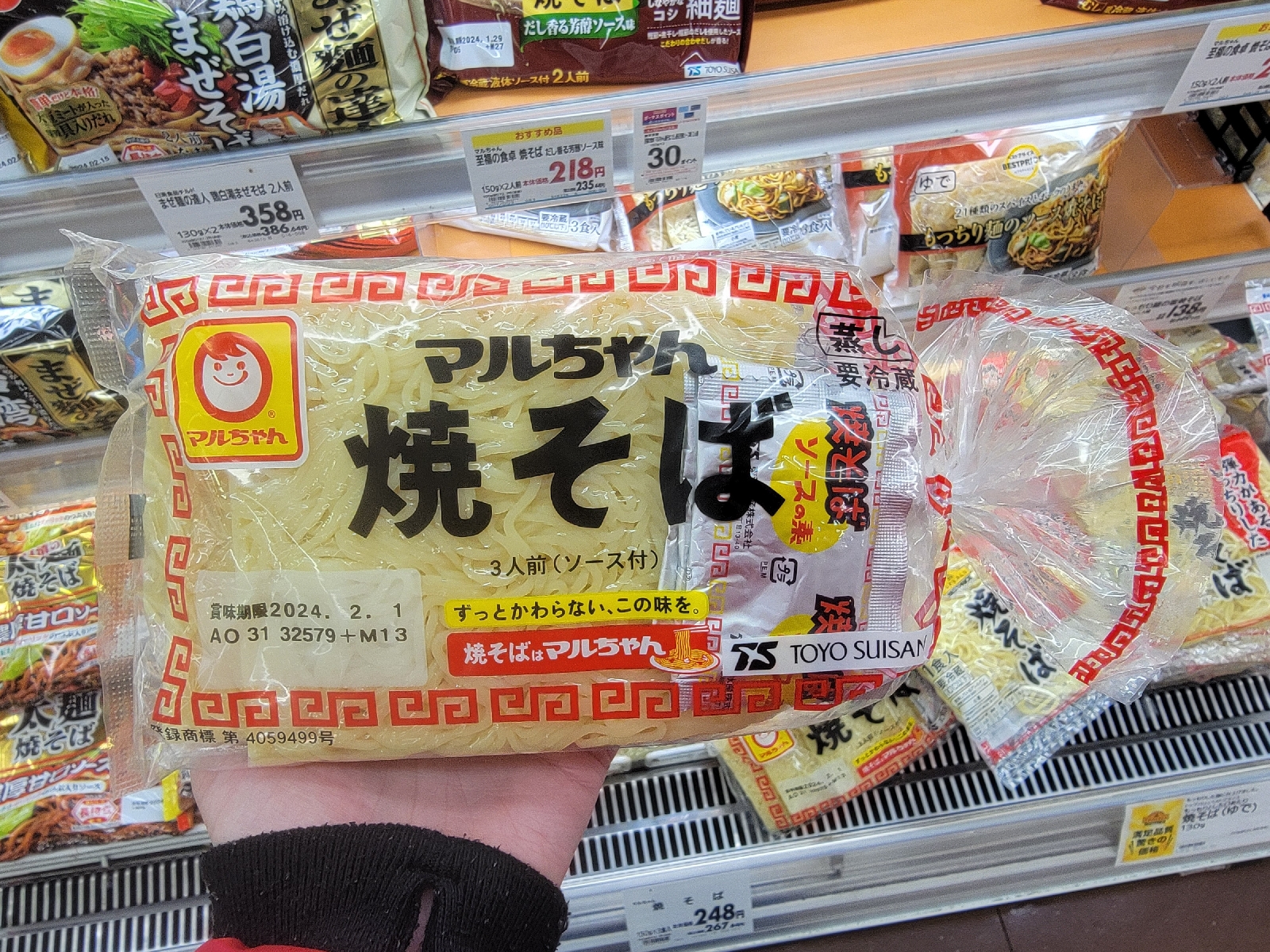It's very nerve wracking coming to a country that drives on the opposite side of the road. Not only that, the steering wheel is on the other side, and everything is flipped in the car. The first few times driving were the worst. I'd flip the windshield wipers on at least once a drive for a while, trying to turn on the blinker. I also leaned to the left because I felt waaaay too close to things on my right side, since I was used to being on the other side of the car while driving.
Here is the car we are leasing here in Japan. It's called a Toyota Sienta. Yes, Americans, you read that right. It's a Sienta, not Sienna. It is technically a mini van, since it seats seven, but the third row of seats is quite small and there is no storage when they are in place. When they are folded, they lay fairly flat, so it leaves us a lot of storage space for Costco trips and road trips. We thought it would be a good car for driving guests around town or road tripping just our family around Japan.
Looking in from the passenger's side of the car, the driver sits on the right side of the car, not on the left like in the States.
The driver's side.
Everything is on the opposite side from cars in the States, including the blinkers, windshield wipers, and the automatic transmission gear shift. Thankfully, the gas and the brakes pedals are on the same sides at your feet! Otherwise that could be disastrous! The first time I drove in Japan it was on regular streets with an instructor from a driving school who was grading my EVERY move. It was a month into our time in Japan and I hadn't driven at all since I left the States. Philip drove first, he drives very cautiously, but even he got feedback from this driving instructor! We were both graded on our driving and we each received a "C" grade, hahaha! It was passing, though, so we got the OK to drive ourselves!
To get a Japanese driver's license, we have to take both a written test and an actual driving test. Instead of having a Department of Motor Vehicles (as California does), or Department of Public Safety (as Texas does) each prefecture has their own driver's license centers. Not sure why police is in the name, but I am guessing it's because all the teachers/testers are retired policemen.
The relocation company supplied us with a Japanese driving handbook in English.
So many different signs, but thankfully most are similar to in those in the States.
Probably the biggest difference in driving (besides being on the opposite side of the street and car) is the lights. They have the same colors for stop, go, and slow; but this is a common sight and very confusing at first. In the States, arrows are reserved for turns and a circular red light is usually only used for straight through traffic and right turns (but sometimes a yield on left turn), but in the top photo, the arrow is being used for straight ahead drivers. Turning in both directions have a red light. In the bottom photo, everyone can go but right turns.


Another big difference that doesn't warrant a photo is in the States it is OK to turn right (the direction of turn where you do no have to cross traffic) as long as you come to a complete stop and look to see if anyone is coming. In Japan it is ILLEGAL to turn left (the direction of turn where you do not have to cross traffic). There is ONE exception. If there is a blue arrow with a white background, you may turn on red. I have yet to notice one yet here on the streets of Japan. Usually you see white arrows with a blue background, which indicates the direction of traffic movement (on a one way street).
In order to convert your foreign licence to a Japanese license, you must take both a written and practical driving exam. The written test is easy, it's mostly common sense and most people pass the first time. The driving portion, however, is very difficult. So difficult that the company will pay for us to take it TWICE. There are three courses for the driving test for foreign license conversion. You are supposed to memorize all of them, but you won't know which course you will drive until the day of the test. The tester will tell you right or left, but not when to change lanes.
The test is on a closed course. It has everything like in real life, such as traffic lights, stop signs, a simulated railroad crossing (transferring your license from another country doesn't cross this, but it should be noted that it's the law to make a full stop at a railroad crossing and look both ways before proceeding), crosswalks, curvy narrow roads (s curve), sharp narrow corners (the crank), parking spots (transfers of license do not have to park in the test, but it should be noted that it is customary to back in to any given parking spot), cones blocking the street, even a bridge for manual transmission tests (it is a separate test from automatic transmission). Unlike the driving tests in the States, the car is provided on your test day. They are these really old Toyotas, which are made for driving tests and practices; the passenger even has a break.
During the test itself, the testers are looking for a million safety checks (turn left blinker on and bike check then bike check again before you actually make a left at a green light, right left right, right left bike check right, right left right and crosswalk check, etc). They are also looking for your to get really close to the center line when making a right turn (a LOT of streets in Japan are NARROW), and really close to the curb on left turns as to not let a bike or scooter squeeze between your car and the curb since you would hit them while turning. The larger vehicle is always at fault in Japan, i.e. the car when a bike is involved or a bike when a pedestrian is involved. When changing lanes, you must first check the rear view mirror. I don't think I have ever done that when changing lanes before; so first is rear view, side view on the side you want to change lanes, then blind spot check by actually turning your head, then look forward, and then finally change lanes. I also got called out in practices for putting my hand inside the wheel to turn (hand pointing up) you must always have your hands in the 10 and 2 position and not reach inside the wheel.
Neither Philip nor I passed the first time taking the test. Philip passed the second time, which was great, because it didn't cost us personally any more money. Unfortunately, I took a third time to finally pass. The test itself is cheap (around $20 USD, but the lessons to practice with an instructor at the license test center to get tips and practice each of the three courses was more expensive (around $70 USD). If I hired a translator through the relo company, that would be around $50 USD an hour, so taking the test a third time could have been very expensive. (I had to get there early to take an eye test, check in, and walk the course, with a 90 minute wait to get the results, so it would have been around 3.5 to 4 hours I'd have to pay the translator for). Fortunately for me, Philip was able to arrange his schedule so he could be my translator. He really only needed to translate the feedback and what they informed me about after I received my actual license. If I had done a fourth test, I might have tried going alone, but I am thankful I didn't need to worry about that.
Something interesting we learned after I got my license is that if your foreign license expires during your stay in Japan, you can apply for an international license to use in your home country. Our licenses from Texas will actually expire next year, so we will need to renew them (hopefully) online to keep them current. What do you think of the process of transferring your license? It seems overly complicated in some ways and several people I know personally have said it's a racket and that they are trying to make money off of us.






































